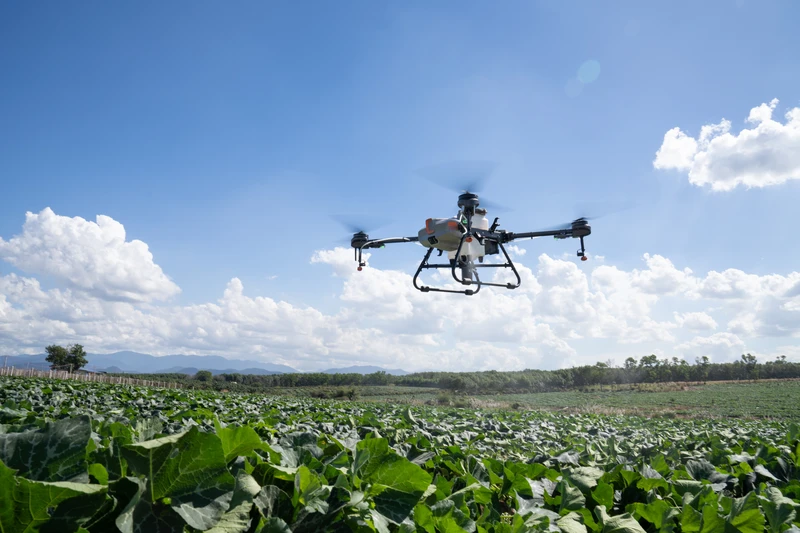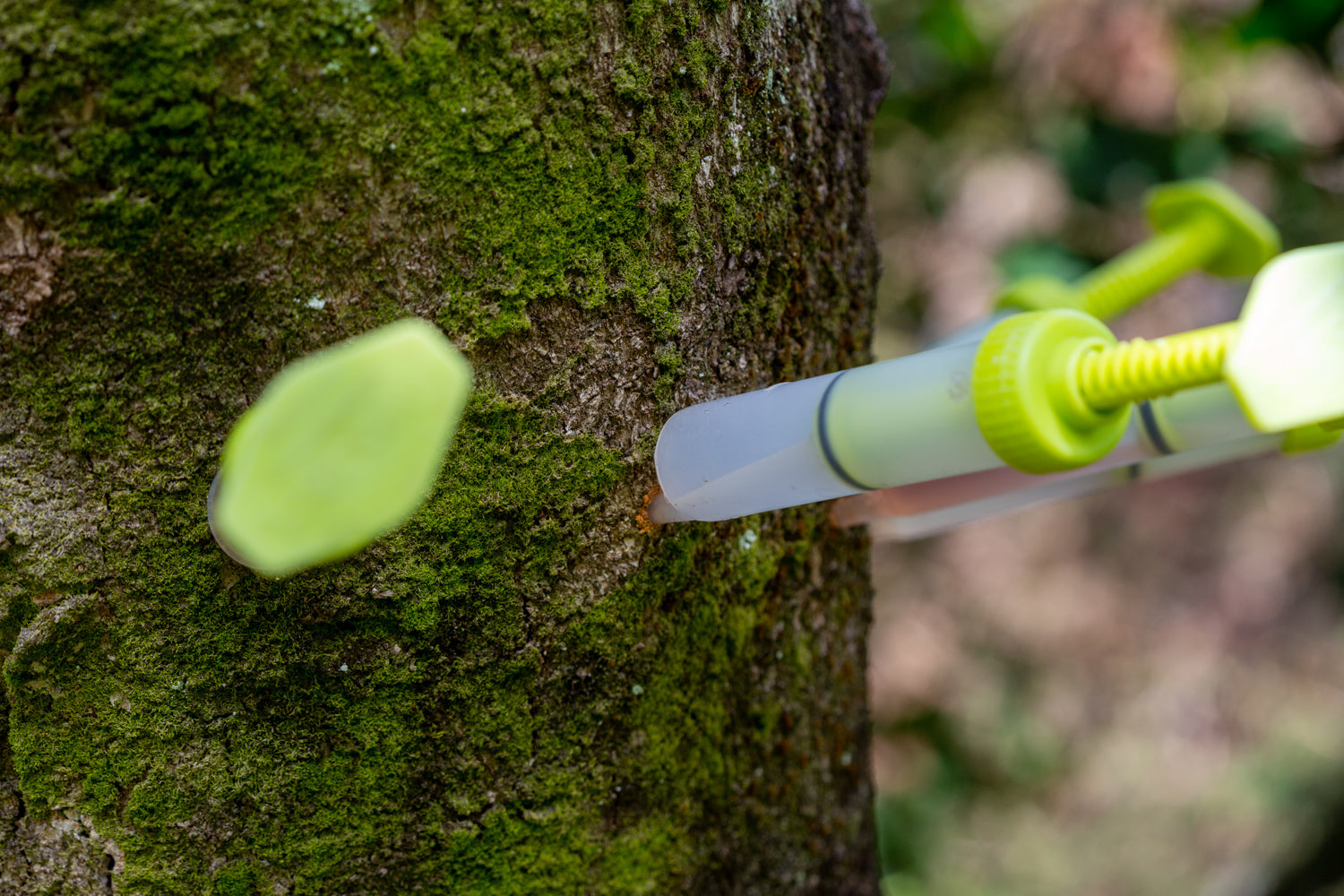
Herbicide Application Techniques: Precision and Efficiency
Herbicides play a crucial role in weed control across various sectors in Australia, from agriculture to land management. Effective herbicide application is essential for achieving weed control goals while minimising environmental impact.
In this article, we will explore the herbicide application techniques commonly used in Australia, emphasising precision, efficiency, and responsible usage.

Foliar Spraying
Foliar spraying involves applying herbicides directly to the leaves and stems of target weeds. It is one of the most widely used herbicide application techniques in Australia.
There are three basic approaches to foliar application of herbicides:
Spot Spraying
Spot spraying is a targeted approach where herbicides are applied only to individual weed plants or small patches. It is often used in non-crop areas and conservation efforts.
Advantages:
- Minimises herbicide use.
- Preserves non-target vegetation, ideal for amenity landscape and ecosystem management activities
- Ideal for managing isolated weed infestations.
Disadvantages:
- Significantly slower application rate/area coverage
- Increased potential for operator exposure

Boom Spraying
Boom sprayers are common in agriculture and involve a system of nozzles mounted on a horizontal boom. These sprayers are typically used for large-scale herbicide applications.
Advantages:
- Wide coverage area, suitable for broad-acre cropping.
- Adjustable boom height for precise application.
- Reduced operator exposure to chemicals.
Disadvantages:
- Reduced precision
- Increases volume of application
- Access constraints in challenging terrain

Aerial Spraying
Aerial spraying involves the use of aircraft to disperse herbicides over large and often inaccessible areas, such as forests or remote regions.
Advantages:
- Covers vast areas quickly suitable for broad-acre cropping.
- Access to challenging terrain.
- Suitable for firebreak creation and invasive species control.
Disadvantages:
- Significantly reduced precision
- Increases volumes of application
- Significantly increases drift risk
- Requires highly specialised equipment

Soil Application
Soil application involves applying herbicides directly to the soil supporting target weeds. It is used widely in turf and primary production settings to prevent weed establishment or weed root development.
Advantages:
- May prevent weeds from establishing in the first place
- Limits risk of drift during application
- Effective in turf and crop settings where conditions favour a monoculture.
Disadvantages:
- Can be persistent in the soil
- Requires careful calibration

Cut Stump Treatment
Cut stump treatment involves cutting down woody weeds and applying herbicides directly to the freshly cut stump. This technique is prevalent in woody weed control. It is suitable for trees or shrubs of any size where complete removal is an option.
Advantages:
- Effective for controlling woody and invasive species.
- Preserves non-target vegetation, ideal for amenity landscape and ecosystem management activities.
- Minimises resprouting.
Disadvantages:
- Only suitable where complete removal of target weeds is feasible.
- Requires instantaneous application once the target tree has been cut.
- Significantly slower application rate/area coverage
Basal Bark Application
Basal bark application is used for woody weed control, where oil soluble herbicides are applied directly to completely cover the bottom 30cm of the tree or shrub trunk in a hydrocarbon carrier, which allows the herbicide to travel through to the bark. It is suitable for thin-barked saplings and shrubs.
Advantages:
- Effective against woody species.
- Preserves non-target vegetation, ideal for amenity landscape and ecosystem management activities.
- Prevents resprouting.
Disadvantages:
-Not suited to rough barked trees or shrubs or anything with DBH greater than 10cm.
-Only effective with oil soluble herbicides (ester formulations)
- Significantly slower application rate/area coverage

Stem Injection
Herbicide is applied directly to the sapwood of a target tree or shrub, through shallow holes in the bark. Holes should be placed at no greater than 50mm spacings and should go around the entire trunk and in the instance of multi-stemmed trees, each trunk.
Advantages:
- Effective against woody species.
- Reduces the need for cutting or removal.
- Preserves non-target vegetation, ideal for amenity landscape and ecosystem management activities.
Disadvantages:
-Can be challenging to ensure herbicide is applied at correct depth.
-Significantly slower application rate/area coverage
-Need to consider if target will present a hazard if it is left to die in-situ.

Wick Wiping
Wick wiping is a selective technique where a wick or sponge soaked in herbicide is wiped directly onto the leaves of target weeds.
Advantages:
- Highly selective, minimising damage to non-target plants.
- Ideal for controlling weeds in sensitive areas like wetlands.
Disadvantages:
- Requires a consistent variation in height between target weeds and desirable vegetation to be effective
Herbicide application techniques in Australia have evolved to prioritise precision, efficiency, and responsible herbicide use. The choice of technique depends on factors such as the type of weed, the scale of the operation, environmental considerations, and safety requirements.
By employing these diverse techniques appropriately, land managers, farmers, and environmental stewards can effectively control weeds while minimising the impact on non-target vegetation and ecosystems, contributing to sustainable land management practices in Australia.
Additional content
VIEW GWS' ADDITIONAL CONTENT TO LEARN MORE ABOUT THE WEED INDUSTRY

Towards Modern Vegetation Management: Solutions for Australia’s Linear Infrastructure
Understanding the Changing Vegetation Challenge Vegetation management across Australia’s linear infrastructure corridors is becoming increasingly complex. Roads, rail corridors, gas pipelines, elec...
Read more
Case Study: Parthenium Weed Hygiene
Introduction: The Necessity of Weed Hygiene Management Australia’s vast expanses and diverse land uses, from grazing pastures and cropping zones to natural bushland and urban corridors are u...
Read more
The Critical Role of Weed Hygiene in Effective Weed Management
Weed hygiene management is a cornerstone of effective biosecurity and sustainable land use in Queensland. The unchecked movement of soil, vehicles, stock, and equipment can inadvertently spread inv...
Read more

